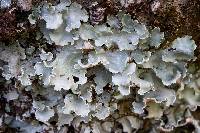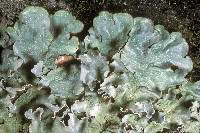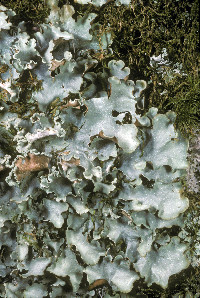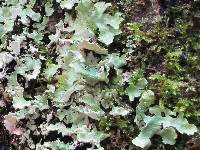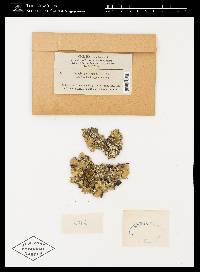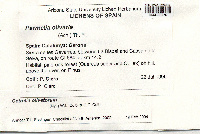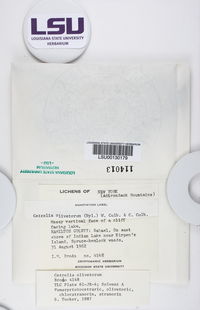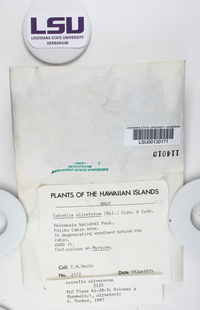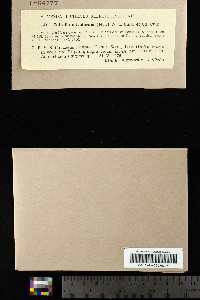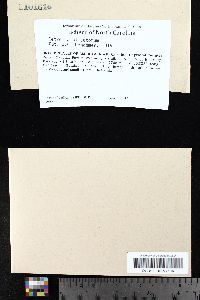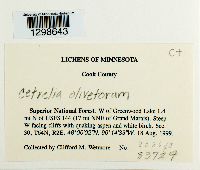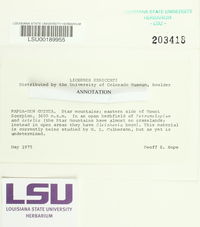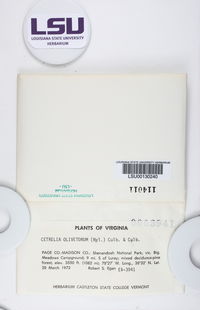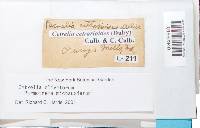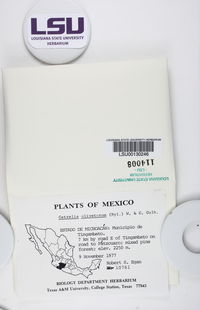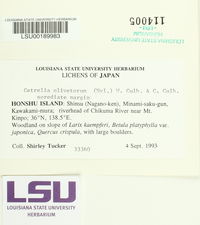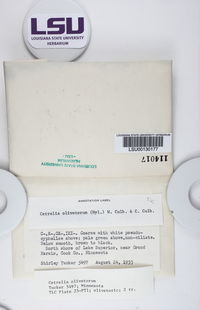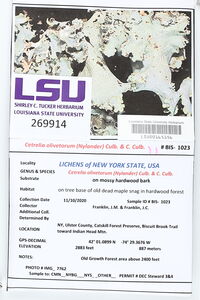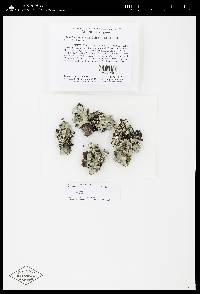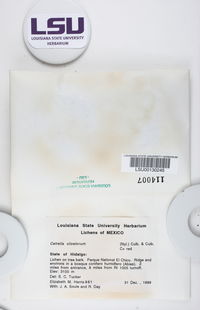
Consortium of Lichen Herbaria
- building a Global Consortium of Bryophytes and Lichens as keystones of cryptobiotic communities -
- Home
- Search
- Images
- Species Checklists
- US States: O-Z >
- US National Parks
- Central America
- South America
- US National Parks
- Southern Subpolar Region
|
|
|
|
Family: Parmeliaceae
[Imbricaria olivetorum (Ach.) Arnold, moreParmelia cetrarioides var. rubescens (Th. Fr.) Du Rietz, Parmelia olivaria (Ach.) Th. Fr., Parmelia olivaria f. aradensis (Gyeln.) Gyeln., Parmelia olivaria f. subvenosa Gyeln., Parmelia olivaria var. albosuffusa Gyeln., Parmelia olivaria var. esorediata (Vain.) Zahlbr., Parmelia olivaria var. olivetorum (Ach.) Gyeln., Parmelia olivaria var. sorediosa (Vain.) Zahlbr., Parmelia olivetorum Nyl., Parmelia olivetorum var. esorediata Vain., Parmelia olivetorum var. hypomelaena Kremp., Parmelia olivetorum var. hyporysalea Vain., Parmelia olivetorum var. olivetorum Nyl., Parmelia olivetorum var. sorediosa Vain., Parmelia perlata var. olivetorum Ach., Parmotrema cetrarioides subsp. rubescens (Th. Fr.) M. Choisy, Rimelia olivaria (Ach.) Hale & A. Fletcher nom. rejic.] |
Nash, T.H., Ryan, B.D., Gries, C., Bungartz, F., (eds.) 2002. Lichen Flora of the Greater Sonoran Desert Region. Vol 1. Thallus: loosely attached, 6-20 cm broad, forming wavy, wide-spreading patches lobes: broad and rotund, 0.5-1 (-2) cm wide; margins wavy, crisped, raised upper surface: greenish mineral gray (glaucous gray, sometimes tinged brown), pseudocyphellate with small pores (up to 0.5 mm wide) soredia: farinose, primarily along margins of lobes; without isidia lower surface: black, often with brown, rhizine-free zone towards the margin, somewhat wrinkled; rhizines: scattered, simple, black Apothecia: rare, 1-7 mm in diam.; hymenium: 60-110 micro meter tall ascospores: ellipsoid, 12-15 x 7-10 micro meter Pycnidia: unknown Spot tests: upper cortex K+ yellow, C-, KC- and P+ yellow; medulla K-, C+ red, KC+ red, P-, UV+ white Secondary metabolites: upper cortex with atranorin and chloroatranorin; medulla with olivetoric acid. Substrate and ecology: amongst mosses on broad-leaved trees, or less frequently rocks, in well-lit, but moist or boggy, sheltered, often long-established, woodlands and Salix World distribution: temperate and montane forests of the Northern Hemisphere, particularly in eastern North America, western Europe and eastern Asia Sonoran distribution: only reported for southern California [Hasse (1913), as Parmelia olivetorum determined by Nylander]. Notes: The species may be extinct now as it was not found by Ross (1982) and was not recognized by Culberson and Culberson (1968) as occurring in southern California. The spot test reactions given by Hasse do, however, fit the species. |
|
|
|
Powered by Symbiota



